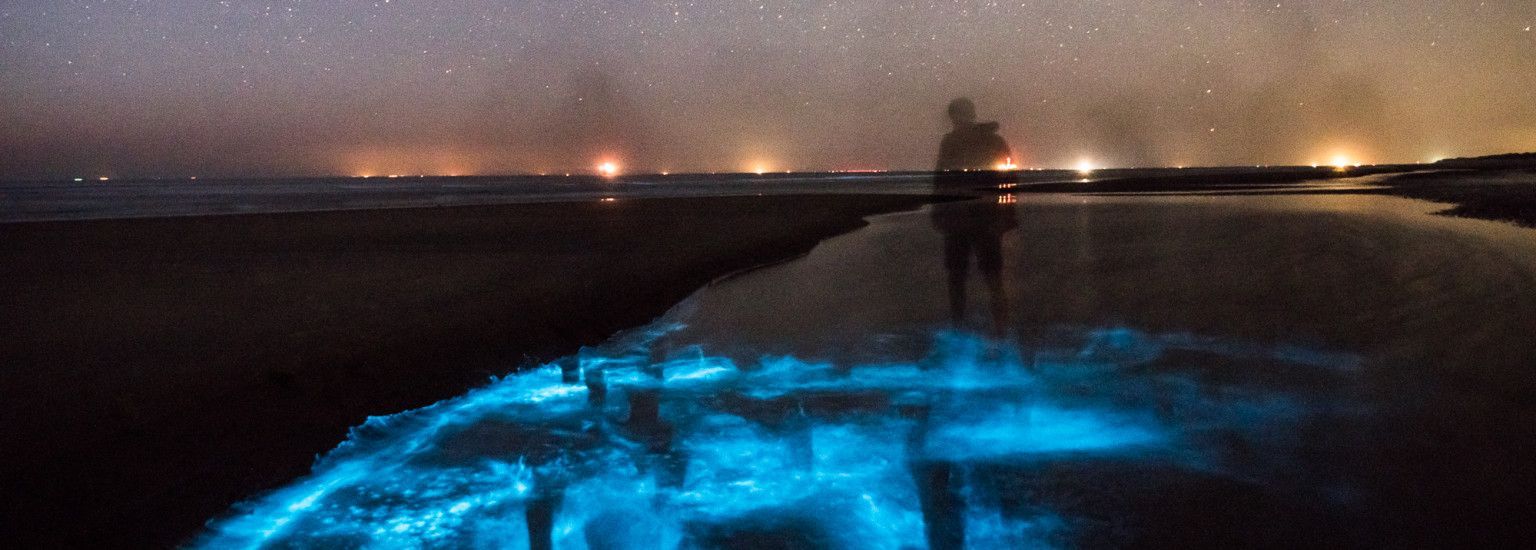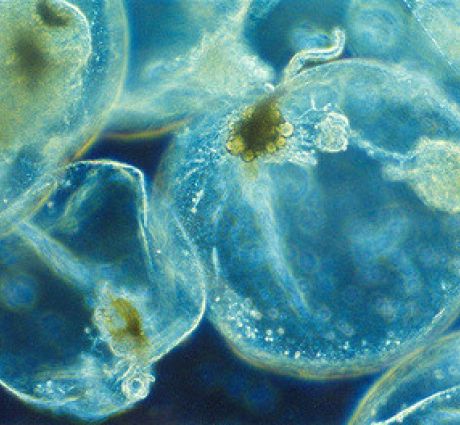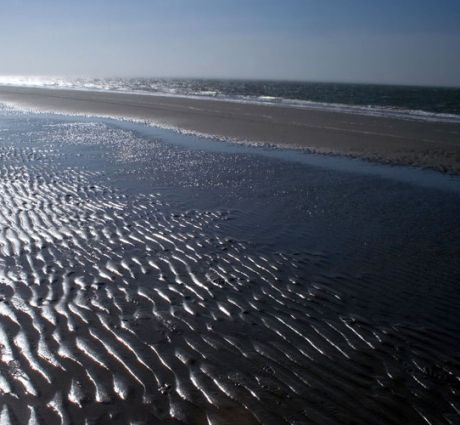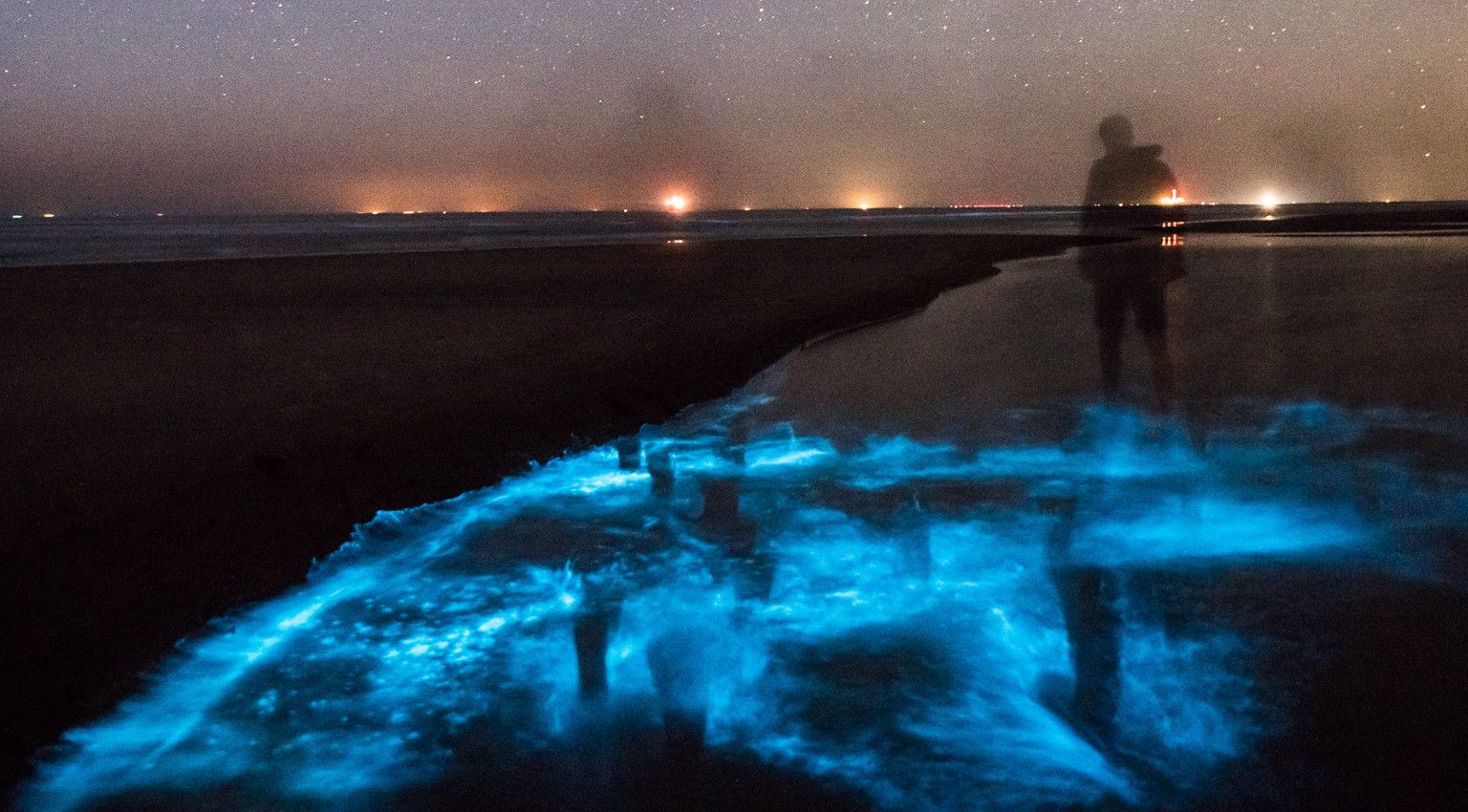
Sea spark
You may have walked along the beach on a warm summer evening and seen a luminous glow in the waves. As you walk through the water, your footsteps remain like glitter in the sand.
The coast turns into a fairy tale landscape. The magical creature that causes this is sea sparkle, a single-celled alga that can light up. But what exactly is it, why does this alga give off light and when are you most likely to see it?
Ecologist Lyce Saathof speaking:

-
Enchanting
If you've ever seen sea sparkle, you know how enchanting it can be. The water lights up blue and can sometimes even turn the waves into glitter. The sea sparkle alga is a tiny organism, barely a millimeter in size. It is not a true alga or animal, but a single-celled organism. Its Latin name is Noctiluca scintillans, an apt name meaning flashing nightlight. Sea sparkle looks a bit like a balloon with a small tail. This allows it to move through the water and catch food along the way. This tiny sea spark algae eats larvae of shellfish and fish, or similar, and is in turn eaten by shrimp.

-
Glitter sea
When large amounts of algae grow near the shore, it can cause the sea to light up. This usually happens when the water is nice and warm, when the sun is shining and it is relatively windless. In those conditions, the algae can multiply rapidly. Then there is also a lot of plankton growing in the sea, and all that food allows the algae to grow rapidly in numbers. If there is a lot of sea sparkle in the sea, you can see it well even during the day near the beach. The small algae can hardly be seen with the naked eye, but when there are large quantities, an orange-brown haze can be seen in the sea.
Deterring enemies
But why do these tiny organisms have these beautiful lights? A story from long ago tells of the origin of sea spark: by the goddess of love, Venus. From the depths of the sea, Venus once emerged. She was so beautiful that the water around her was eager to catch her reflection. Venus bowed to the sea and gave the sea a glimpse of her beauty. This was so beautiful that since that moment the sea still shows that glitter. Could that be the explanation for the luminous algae? Science tells a slightly less romantic story. For the alga, this lighting up is primarily a deterrent to enemies. The movement of water creates a chemical reaction, also called bioluminescence, which creates a blue glow. For example, due to the waves or when you walk through the water. The movement of the water causes energy to be converted into light. The light may confuse enemies of sea sparks and prevent them from properly hunting the sea spotted algae. Another theory is that sea sparks emit light to communicate with each other. Sort of like little lighthouses showing each other the way.

Photo: Rafael Martig
Best time to see sea sparkle
You can see sea sparkle all year round, but when the temperature rises, you have the best chance to admire this spectacle. During June, the seawater is already getting warmer and the algae can grow faster. Therefore, in summer you have a great chance of seeing sea sparkle. But due to the warming of the sea water, sea sparkle is becoming more common. In addition, a calm sea allows the algae to float to the surface and you can see the lights well. If it has been warm for several days and also windless, you have a good chance of seeing sea spark. On the Wadden Islands it gets well dark at night and there is a good chance to admire sea sparkle! There are also special facebook pages and websites where you can check for sea spark reports. Then go to the beach after dark and splash a bit through the water to light up the sea sparkle. Experience this natural wonder for yourself!
Lyce Saathof
Ecology and education staff member - Amelander Museums Foundation